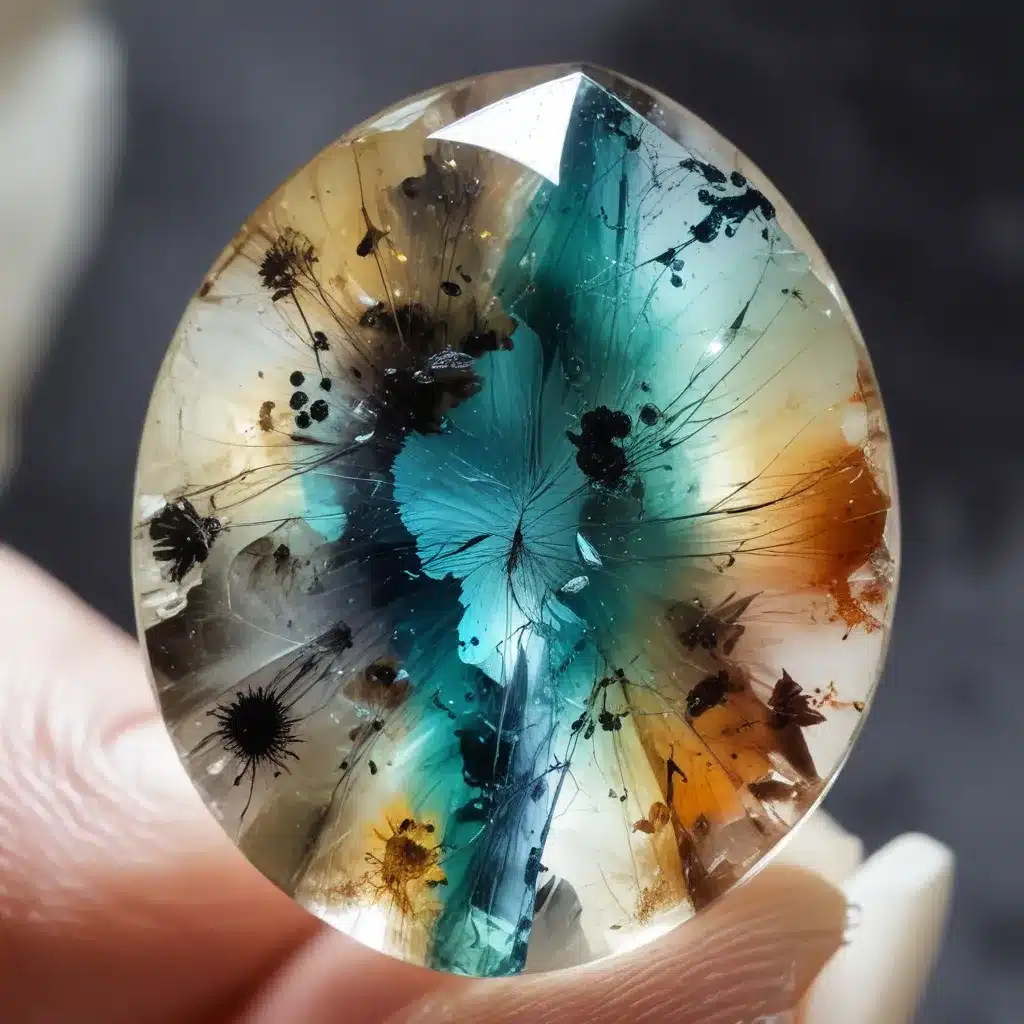
Have you ever peered deeply into a gemstone and noticed tiny specks, bubbles, or patterns within its crystalline structure? These natural features, known as gemstone inclusions, hold the secret histories of how each gem was formed. Far from being mere imperfections, inclusions are like gemstones’ personal diaries, recording the Earth’s geological processes deep within their crystalline cores.
Inclusions: Gemstones’ Natural Fingerprints
Inclusions are materials such as minerals, liquids, or gases that become trapped inside a gemstone as it forms under intense heat and pressure, deep within the Earth’s crust. These tiny features act as windows into the gem’s origin story, offering a glimpse into the dynamic environments that birthed these natural treasures.
As a gemstone grows from molten rock or mineral-rich fluids, it may capture particles of other minerals, droplets of liquid, or pockets of gas present in its surroundings. These trapped substances become the inclusions that make each gem truly one-of-a-kind. Just as no two fingerprints are alike, no two gemstones share the same internal characteristics.
By studying these inclusions, gemologists can trace a gem’s geological history, uncovering insights into the specific conditions that led to its formation. Some inclusions, like the “lily pad” discs in peridot or the “horsetail” fibers in demantoid garnet, are even considered identifying features, revealing the gem’s provenance.
The Variety of Gemstone Inclusions
Inclusions come in a remarkable array of shapes and sizes, adding unique character to each gemstone. The three main types are solid, liquid, and gas inclusions.
Solid inclusions are bits of other minerals, such as pyrite in quartz or rutile needles in sapphire, that got trapped as the gem was growing. These can create mesmerizing patterns, sometimes even enhancing the stone’s beauty.
Liquid inclusions are microscopic pockets of fluid, often ancient water, preserved from the gem’s formative environment. In some cases, these inclusions can even move when the stone is tilted, like miniature time capsules.
Gas inclusions appear as tiny bubbles or voids, adding a distinctive sparkle or haziness to the gemstone. These inclusions might contain remnants of the gases present during the gem’s creation.
Beyond these basic categories, inclusions can also take on more complex forms, such as multiphase inclusions containing a combination of solids, liquids, and gases. Imagine a miniature geological scene frozen in time within the depths of the gem.
Inclusions and Gemstone Clarity
Inclusions play a significant role in determining a gemstone’s beauty and value. Clarity, the absence of internal flaws or inclusions, is one of the key factors that gemologists assess when evaluating a gem’s quality.
Stones with fewer and less visible inclusions typically receive higher clarity grades and often command greater monetary value. This is particularly important for transparent gems like diamonds and sapphires, where optimal light performance is highly prized.
However, inclusions are not always a detriment. In some cases, they can actually contribute to stunning optical effects that enhance a gemstone’s allure. For instance, the chatoyancy (cat’s eye) or asterism (star-like) phenomena seen in certain gems are caused by the presence of specific types of inclusions.
Revealing the Secrets Within
Inclusions are more than just imperfections—they are natural fingerprints that tell the stories of how gemstones were formed. By studying these internal features, gemologists can not only identify the gems but also gain insights into the geological processes that created them.
Inclusions can help distinguish natural gemstones from synthetic ones, as each growth method leaves its own unique “signature” within the crystal. They also provide clues about a gem’s origin, with certain inclusion types being characteristic of specific geographic regions.
Beyond their practical applications, inclusions are fascinating for their historical and cultural relevance. Many gem enthusiasts and collectors appreciate these internal features as testament to a gemstone’s natural origins, celebrating the individuality they bring to each piece.
Exploring the Microcosm of Gems
Gemologists rely on specialized tools to uncover the secrets hidden within gemstones. Loupes and microscopes allow them to examine inclusions up close, revealing the intricate details trapped within the crystal structure.
Advanced techniques, such as spectroscopy and X-ray imaging, enable even deeper analysis, providing insights into the chemical composition and structural features of inclusions. This level of examination helps gemologists determine not just the identity of the gemstone, but also the story it has to tell.
Caring for Included Gems
Gemstones with inclusions often require special care and attention. Since inclusions can occasionally weaken the host crystal, included gems may be more prone to damage. Gentle cleaning, avoiding harsh chemicals, and choosing protective jewelry settings are all important considerations to preserve the unique character of these natural wonders.
Embracing the Individuality of Inclusions
Gemstone inclusions are far more than mere imperfections. They are the natural fingerprints that make each gem truly special, offering a fascinating glimpse into the Earth’s geological history. By embracing these internal features, we can cultivate a deeper appreciation for the incredible processes that create these natural treasures.
Whether you’re a gem collector, jewelry designer, or simply someone captivated by the beauty of the natural world, the stories hidden within gemstone inclusions are sure to inspire wonder and awe. So the next time you gaze into the depths of a gemstone, look closely—you just might uncover a hidden chapter of our planet’s geological odyssey.
To explore more about the world of gemstones, visit Shelby Gem Factory and discover the remarkable stories behind these natural marvels.

